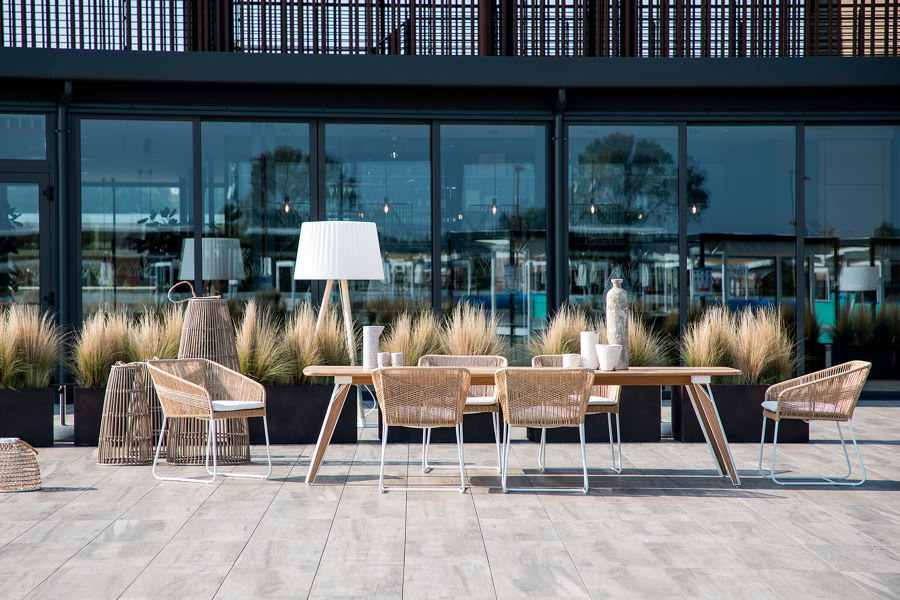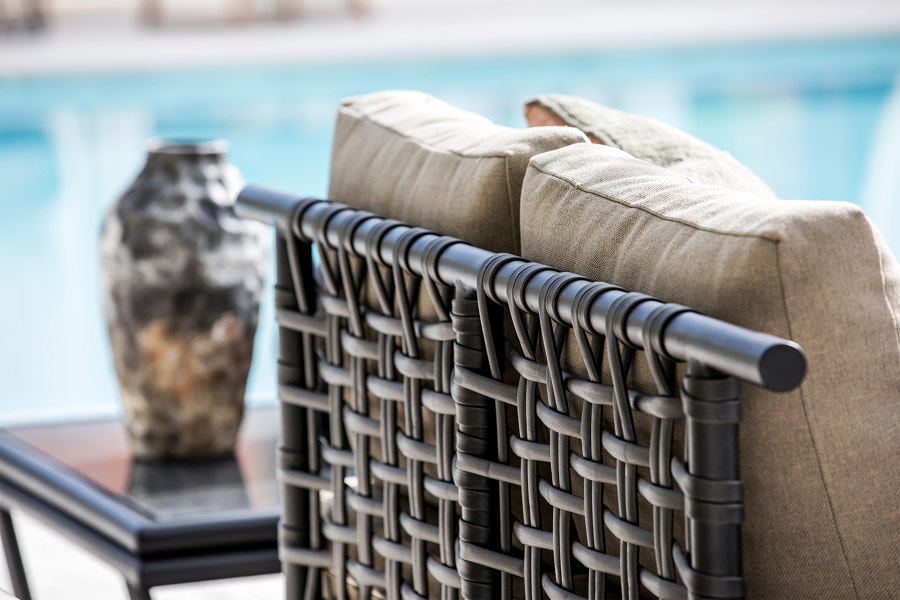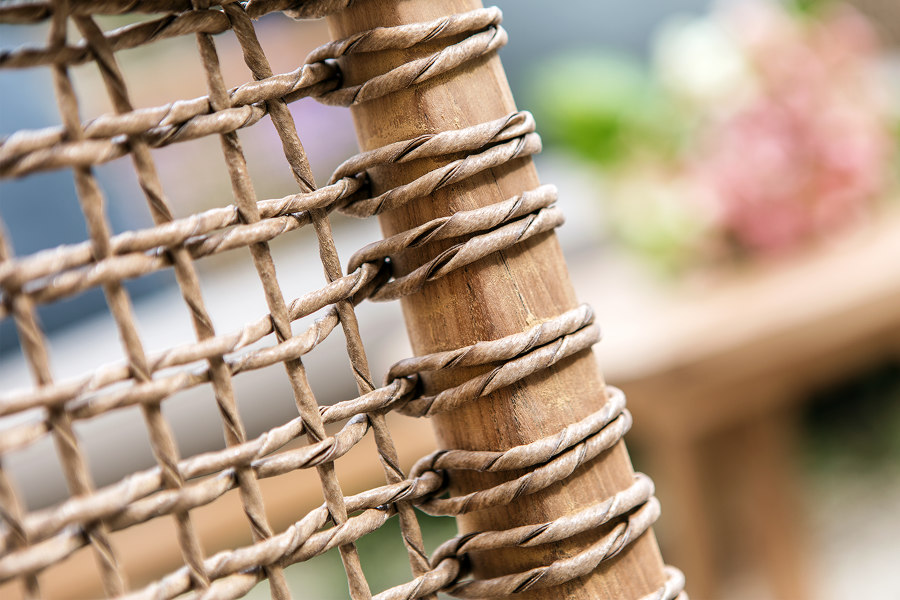Finding the right mix: Cbdesign
Historia de la marca de Emma Moore
KEC. BATEALIT JEPARA, Indonesia
08.09.21
Cbdesign’s outdoor collections combine aesthetic influences from the past with both natural and innovative synthetic materials, to create an optimised blend of performance and design.
Specialists in outdoor woven furniture, Cbdesign collections feature traditional weaving techniques from around the world, in both natural materials and their own synthetic innovations
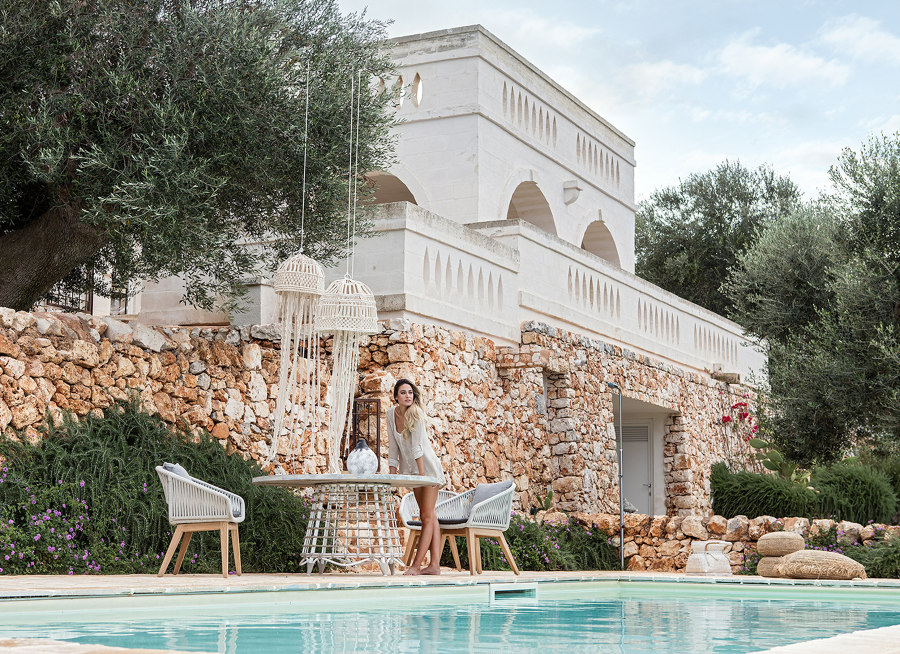
Specialists in outdoor woven furniture, Cbdesign collections feature traditional weaving techniques from around the world, in both natural materials and their own synthetic innovations
×Lately, sensorial solace is being found in texture when it comes to furnishings, giving space for rattan to return to the interior agenda, along with cane and macramé. Indeed, such is the drive to break up the ubiquity of pin-sharp lines and washboard-smooth surfaces, wicker and weaves once consigned firmly to the original era of tie-dye and lava lamps are moving back into homes and gardens in the shape of oversized lampshades, sculpted headboards and cabinetry. They join fresh examples of furniture more accustomed to the loomed treatment such as chairs and poufs, sunshades and loungers.
The Miyako chairs feature epoxy finished aluminium frames and fine synthetic rope that mimics natural rattan. All materials are highly resistant to water, salt, chlorine and temperature extremes
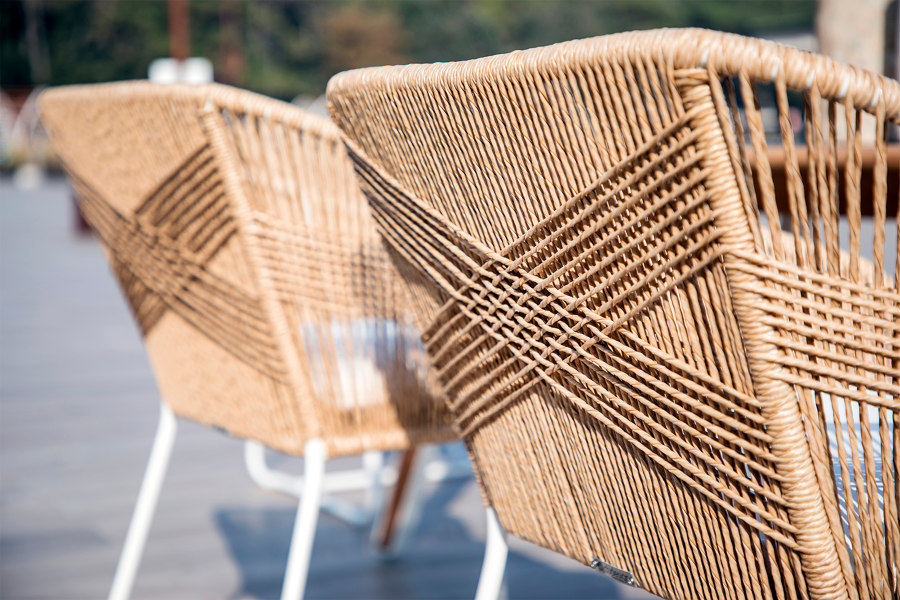
The Miyako chairs feature epoxy finished aluminium frames and fine synthetic rope that mimics natural rattan. All materials are highly resistant to water, salt, chlorine and temperature extremes
×First appropriated by Edwardian homemakers who were inspired by the ultimate warm weather furnishings of the Colonies, the woven style transformed the mid 20th century at the hands of Mies Van der Rohe, Hans Wegner, Eero Aarnio and the whole modernist fraternity, who shaped rattan and cane into new pared-back profiles. The latest resurgence largely borrows its aesthetics from the 1950s and 1970s and plays into the hands of the likes of Italy’s Cbdesign, which has specialised in outdoor woven furnishings since 2002.
Weaving techniques are carried out by skilled craftsmen who use elaborate knotting methods from sailing traditions in their handwork. Here it is seen in the Lodz dining chair

Weaving techniques are carried out by skilled craftsmen who use elaborate knotting methods from sailing traditions in their handwork. Here it is seen in the Lodz dining chair
×For Cbdesign, in fact, loomed and knotted cords never went away – they simply evolved into something new around 20 years ago. In the early 2000s, synthetics emerged to take the place of natural materials in woven furniture ‘Natural materials had previously been luxury materials, but the quality decreased and it became cheaper, and so was used for the mass production of outdoor furniture,’ says Carlo Basso, the company’s principal designer. Inspired by past design movements, and in particular, the enduring profiles of midcentury seating and home accessories, the company made it its mission to preserve the elegance of cane traditions while evolving its materials for changing tastes and improved functionality.
’Our approach is to mix materials that traditionally lived separate lives, such as teak and synthetics’
Its main innovation has been synthetic cording that faithfully emulates cane and rattan while improving on its performance – not only is it UV resistant but it survives temperature extremes, hot and cold, and maintains its colour. It can even take a dip in the pool or sea and sunbathe for hours without literally and metaphorically unravelling. 2011 saw the development of a 10mm synthetic ‘reed’ which combines with aluminium frames to recall the cane designs of the 1970s as seen in the Fiorella collection. Then, in 2016, a synthetic rope with a fatter profile (11-14mm diameter) was developed, that allowed for the creation of the Bubble collection, a more enduring version of the bulkier weaves of the 1970s.
In the Florence collection an aluminium frame is skilfully painted by hand in a way that replicates the colour and character of natural cane. The finish is called Manao Texture

In the Florence collection an aluminium frame is skilfully painted by hand in a way that replicates the colour and character of natural cane. The finish is called Manao Texture
×Around 2011, the company also applied new thinking to aluminium, developing spokes that could better integrate with the synthetic cords and enhance the latter’s mission to mimic natural cane. Thicker profiles evoke tradition, while thinner profiles have a more modern feel, as seen in the Miyako collection. An additional finishing technique, called Manao Texture, used in the Florence collection, sees the knots, veins and shades of natural rattan painted on by skilled artisans. All are sealed with a customisable epoxy finish designed to resist the onslaughts of poolside and maritime aggressors.
A byproduct of these developments is a certain ergonomic advantage too. The malleability of the materials allows for chair and sofa designs to curve and cradle sitters in total comfort, even without the need for cushions. The advancements, however, don’t answer every call. The current surge in popularity for woven furniture is in part a response to ecological concerns, and the tendency towards re-introducing natural materials to our designed environments.
With a material mix of synthetic spoke and weave, natural teak, and natural rope macrame handmade in Java, the collections slot comfortably into the current call for 70’s style weaves
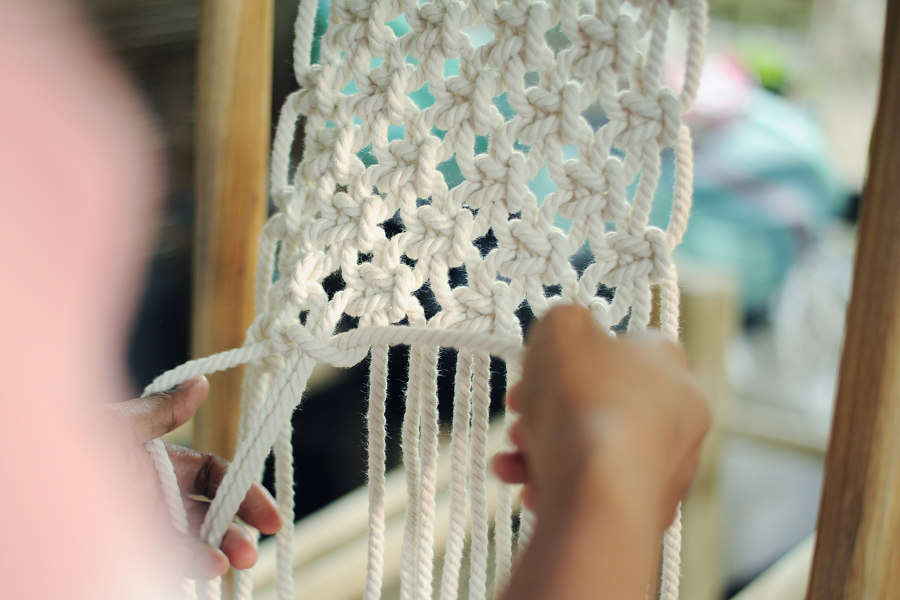
With a material mix of synthetic spoke and weave, natural teak, and natural rope macrame handmade in Java, the collections slot comfortably into the current call for 70’s style weaves
בLately there is a return to natural,’ agrees Basso. It is reflected in Cbdesigns recent launch of the modular Woo system, crafted from teak, and the brand’s recent embrace of macramé. A broad collection of pieces featuring the distinctive knotting technique is designed and made in Java. ‘Our latest approach is to mix materials that traditionally lived separate lives, such as teak and synthetics,’ says Basso. While natural materials may be the order of the day, there is always room for improvement, and durability is also an important part of the fight to sure up the environment.
© Architonic


